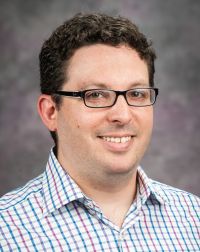Loren Greenman
If you can read this, your browser is unable to properly import or use
Cascading Style Sheets (CSS). Please upgrade to a more modern browser.

Loren Greenman
Associate ProfessorPh.D. Physics, 2011, University of Chicago
Contact Information:
- Phone: 785-532-0846
- e-mail: lgreenman@phys.ksu.edu
- Web: http://www.phys.ksu.edu/people/tt-faculty/greenman.html
Research Interests:
Theoretical Atomic, Molecular & Optical Physics
Please visit the Physics Department for teaching and class information.
My group is interested in describing the interactions of laser pulses with molecules. Laser pulses are getting shorter and more intense, allowing experimentalists to probe electronic and nuclear dynamics on their natural timescales. However, complex dynamics emerge at these timescales. Modern theories have difficulty describing non-adiabatic coupling, high-lying molecular excited states, and unbound electrons, especially for larger molecules. We have recently developed adaptive grid techniques to address some of these complications. We also develop and use modern electronic structure methods to describe these systems.
As the target molecules of laser experiments get larger, describing their complicated structure and dynamics becomes a greater challenge. Our methods are at the interface of AMO physics, modern quantum chemistry, and high performance computing. Distributed parallel computation drives our work and enables us to consider larger and more complex systems.
It is our ultimate goal to design and describe "molecular movies", dynamical laser experiments that record in real time the electron and nuclear motion and correlation in chemical processes. We hope to use these techniques to learn more about photochemical reactions, efficient conversion between photon energy (including solar) and chemical energy, and photon-driven biological processes.
Recent Publications:
See also Loren Greenman's profile on
Google Scholar.
Access to journal links may be restricted to subscribers.
The KSU Math/Physics Library
offers an extensive collection of journal links.
Last updated on Thursday, 07-Apr-2022

